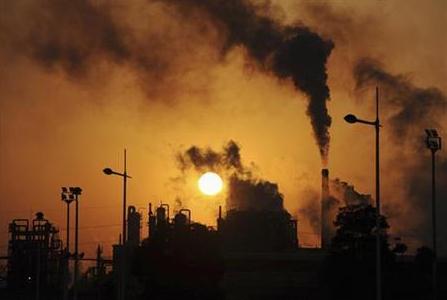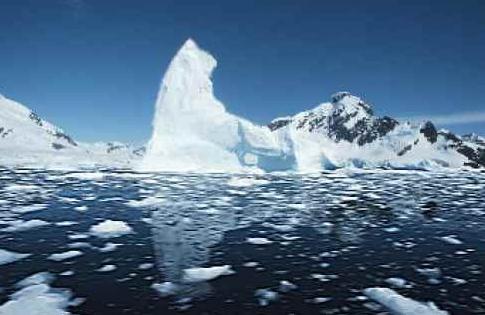Friday Slush Event - Earliest Coating Since 2009?
What is it about the first snowfall of the season? Some Minnesotans, who've been through this drill many times before, temporarily lose their minds. You'd think the forecast called for zombies or dragons! It's just snow, folks.
What is it about the first snowfall of the season? Some Minnesotans, who've been through this drill many times before, temporarily lose their minds. You'd think the forecast called for zombies or dragons! It's just snow, folks.
According
to the Twin Cities National Weather Service this may be the earliest
accumulating snowfall since 2009. Since 2000 there have been only 5 days
in October with measurable snow. The first coating will come about 6
days earlier than normal in the Twin Cities. Unusual, but hardly
unprecedented.
I still remember shoveling 30 inches of snow on Halloween 1991. I'll take that one to my grave.
Clouds
increase today with highs in the mid-50s. A raw north wind changes
light rain over to snow tomorrow. An inch or two of slush may pile up on
lawns, but with air temperatures above 32F I expect most roads to stay
wet. This is just a slushy appetizer; the main event (something plowable
that will turn your commute into a living hell) is still probably 2-4
weeks away.
A chilling breeze blows early next week; highs struggle up to 40F on Halloween. Scary!
** We won't see nearly this much snow. File photo above: Pietro Zanarini.
From the Twin Cities office of the National Weather Service:
European Solution.
The 12z Wednesday ECMWF shows a couple inches of slush for the metro
and much of southern Minnesota, with plowable amounts possible over the
northern third of Minnesota and Wisconsin. I know. Too. Soon. Map:
WeatherBell.
NOAA (NAM) Solution.
Here's the 18z 12 km NAM model output, showing potentially plowable
amounts just west of the Twin Cities. Friday will be raw and snowy by
afternoon but air temperatures should be at or just above 32F much of
the daylight hours, keeping many roads wet. Friday evening and night
could be trickier with wet roads turning to ice as temperatures dip
below freezing. Map: Tropicaltidbits.com.
Map credit: Natural Resources Defense Council.
Report: Drought is "Misery in Slow Motion": From Climate Nexus Hot News: "Worldwide droughts destroy enough food crops to feed 81 million people each day for a year, according to new research. A new report from the World Food Bank calls droughts "misery in slow motion," finding that deadly droughts are four times more costly for economies than floods. The report also lists several examples of the devastating impacts of drought, including increased deforestation as farmers expand crop area and fewer opportunities and more health problems for women born during drought. Climate change helps to drive several factors that can lead to severe drought. "This is not a problem for the future -- it's a problem for the here and now." lead author Richard Damania told CBS." (The Guardian, CBS, Thomson Reuters Foundation. Background: Climate Signals on drought risk)
File photo: Associated Press.

How Trump is Crippling Storm Forecasting Just When It's Getting Good. New times and an apparent uptick in extreme weather events calls for new techniques and technologies just to keep up, argues Eric Holthaus at Rolling Stone: "...The president's budget proposal would slash the National Oceanic and Atmospheric Administration's budget by 16 percent, including 6 percent from the National Weather Service. Besides hampering climate research, the cuts would jeopardize satellite programs and other forecasting tools – as well as threaten the jobs of forecasters themselves. And they may undermine bipartisan legislation Trump himself signed earlier this year that mandates key steps to improve the nation's ability to predict disasters before they happen. It's hard to overstate how backward that seems after the hurricane season we've just witnessed, as well as the deadly wildfires in California, the climate-charged droughts and deluges and, well, you name it. Just when we need forecasting to be better than ever – and need our forecasters to be able to go even further, using those predictions in ways that protect people's lives and livelihoods – the Trump administration wants to cut back?..."
Hurricane Harvey file photo: NASA's International Space Station.
NYC Looking at a Flooded Future: From
Climate Nexus Hot News: "Catastrophic flooding levels considered
once-in-500-year events when New York City was founded could hit the
city once every five years within a few decades, according to new
research. A study published Monday
in the journal Proceedings of the National Academy of Science finds
that while a warmer climate may cause more storms to swerve away from
the city in the future, the storms that do hit New York will bring
devastating floods due to rising sea levels. Researchers say that
7.5-foot flooding in New York, a rarity before 1800, now occurs once
every 25 years, and could rise to once every five years by 2030. The
study also projects that a once-in-500-year flood event by 2100 could
possibly flood parts of the city by up to 17 feet, dependent on the
state of the Antarctic ice shelf. Superstorm Sandy, which hit the city
five years ago this week, brought 9.2-foot floods that inundated
thousands of buildings, knocked out power and decimated the subway
system." (AP, Washington Post $, The Atlantic, InsideClimate News)
Photo credit: "Water from New York Harbor surrounds the southern tip of New York’s Manhattan borough on Tuesday, Oct. 17, 2017, seen from aboard a Staten Island Ferry. Superstorm Sandy roared ashore five years ago, Monday, Oct. 29, 2012, devastating the coastlines of New Jersey, New York and parts of Connecticut and becoming one of the costliest storms in U.S. history." (Seth Wenig/Associated Press).
New York's Fate is Closely Tied to Antarctic Ice, Climate Scientists Warn. Chris Mooney explains at The Washington Post: "New York City’s ability to withstand hurricanes could hinge on the state of the Antarctic ice sheet some 8,000 miles away, according to a study published Monday. Using computer projections to simulate thousands of storms in potential future climates, researchers found that storms would be more likely to swerve away from the city. The trouble is the storms that do approach will, on average, be more powerful. And all storms that hit New York, regardless of their power, will start at a higher baseline, as they’ll be traveling on seas that have risen due to climate change. The result is that the risk of a storm similar to Hurricane Sandy, albeit with a slightly smaller storm surge, has gone from a one-in-500-years event in 1800 to a one-in-25-years event today. By the period between 2030 and 2045, such storms could become a one-in-five-years event, according to the projections..."
File photo: "Stormy seas crash into a pier along the northeast U.S. coast." (Proceedings of the National Academy of Sciences)
How Cities Are Defending Themselves from Sea Level Rise. AP and The Washington Post have the story: "Superstorm Sandy and a series of lesser coastal storms since that 2012 disaster compelled some coastal communities to defend themselves by elevating homes and critical infrastructure, building sand dunes, widening beaches and erecting or raising sea walls. But as sea levels continue to rise around the world, that’s not an option in large cities, where skyscrapers can’t be elevated and subway and train tunnels act as turbocharged flumes when millions of gallons of stormwater rush through them. The answer, some cities have decided, is a mixture of hard and soft barriers; green infrastructure to capture rain and absorb storm water; temporary storage space for runoff; and drastically increased pumping measures..."
File photo: Matt Merrifield, AP.
Forest Fires Stoke Record Loss in World Tree Cover: Monitor. Reuters has the details: "Forest
fires in Brazil and Indonesia contributed to a record loss in global
tree cover in 2016, equivalent to the size of New Zealand, that could
accelerate deforestation blamed for climate change, an independent
forest monitoring network said on Monday. Man-made global warming
increased the risks of wildfires by adding to extreme heat and droughts
in some regions, according to Global Forest Watch (GFW). This year,
California and Portugal have been among places suffering deadly blazes.
The combination of forest fires with land use change and climate change
could speed destruction in areas like the Amazon and contribute to
emissions of carbon dioxide, one of the gases that contribute to global
warming, the report said..."
File photo credit: "Police
and a fire fighter from a local forestry company try to extinguish a
forest fire in the village in Rokan Hulu regency, Riau province,
Sumatra, Indonesia August 28, 2016 in this photo taken by Antara Foto.
Picture taken August 28, 2016." Antara Foto/Rony Muharrman/via REUTERS

* Access to the paper referenced above is available at The Lancet.
Subsidizing Coal is Far From Conservative. Here's an excerpt of an Op-Ed at Bloomberg: "...In addition, let's recognize that Perry is pushing for coal to be rewarded for one positive attribute, "resilience," even as the administration downplays a glaring negative one, carbon emissions. Maximilian Auffhammer, a professor at the University of California at Berkeley, captured this inconsistency in a recent blog post:
Subsidizing coal for its reliability attributes is like subsidizing bacon for its nutritional content.Ignoring the problem of climate change, or setting irrational thresholds for action, is to just roll the dice. Jerry Taylor, founder of the libertarian think tank Niskanen Center, put it this way in a detailed paper stating the case for a carbon tax, published in 2015:
Risks from climate change are real and a policy of ignoring those risks and hoping for the best is inconsistent with risk management practices conservatives embrace in other, non-climate contexts..."File photo: Matthew Brown, AP.
Solar Costs Set to Fall Further: From Climate Nexus Hot News: The already-plummeting costs of installing solar power could fall an additional 60 percent over the next decade, the head of the International Renewable Energy Association said Monday. IRENA director general Adnan Amin told Reuters that the organization expects an additional 80 to 90 GW of solar capacity will be added worldwide each year for the next five to six years, and that improvements in technology, including batteries, will help drive down costs. Earlier this month, a new solar project in Saudi Arabia set a record for the lowest bid prices ever recorded for solar energy at 1.79 cents/kWh. A report from the International Energy Organization earlier this month hailed a "new era" for solar, naming it the fastest-growing source of new energy in 2016. (Irena: Reuters, PV Magazine. Saudi Arabia: Bloomberg. IEA: Reuters, CNBC, The Guardian, Bloomberg, Mashable. Commentary: ThinkProgress, Joe Romm column)

Over 40% of Tech Workers Worried About Losing Their Jobs to Ageism. Bizjournals.com has the details: "More
than 40 percent of tech workers polled are worried they will lose their
jobs because of ageism, a new study from job listing site Indeed, with almost 20 percent saying they worry “all the time” about becoming too old for their jobs. Indeed
polled 1,000 tech workers in September 2017 for its study, which found
that 46 percent of the tech sector is comprised of millennials, with a
much smaller minority of 26 percent made up of baby boomers and Gen
Xers. The average tech worker polled had been in tech for 15 years and 9
months, with 36 percent saying the average age at their company is
between 31 to 35..."

File image: NASA.
Image credit: "The Iditarod Trail Committee identified four-time champion Dallas Seavey as the musher whose dogs tested positive for a banned substance in this year’s race." (Amber Ferguson/The Washington Post)
58 F. maximum temperature yesterday in the Twin Cities.
54 F. average high on October 25.
52 F. high temperature on October 25, 2016.
October 26, 2010: The lowest pressure on record for Minnesota occurs in the town of Bigfork, with a reading of 28.21 inches of mercury (955.30 mb). Very strong winds were widespread throughout the state, with peak gusts of 65 mph recorded at both Georgeville (Stearns County) and Mehurin Township (Lac Qui Parle County).
October 26, 1996: A severe weather outbreak combined with a blizzard occurred across the upper Midwest. Intense low pressure tracking into Minnesota produced blizzard conditions over portions of South Dakota, while further east in Minnesota, unseasonably mild temperatures developed. Temperatures climbed to near 70, with dew points in the 50s. 1 to 1 3/4 inch hail and strong winds were reported in Lac Qui Parle, Yellow Medicine, Chippewa, and Swift Counties. These storms produced 12 tornadoes; the strongest of which received F2 ratings. Southwest of Alexandria in Douglas County, an F2 tornado with a 9 mile track destroyed several homes. One woman sustained broken bones and internal injuries when a portion of her house, with her inside, was launched 200 feet onto the interstate. This tornado also pushed over a 500 pound fuel tank. Tornadoes also touched down in Swift, Kandiyohi, Pope, Stearns, and Isanti Counties.
THURSDAY NIGHT: A little light rain, changing to wet snow northern MN. Low: 34
FRIDAY: Rain changes to snow, slushy 1-2" on lawns? Wet roads. Winds: N 15-30. High: 38
FRIDAY NIGHT: Snow tapers to flurries -- wet roads become icy. Low: 29
SATURDAY: Partly sunny. Winds ease. Any snow melts. Winds: NW 7-12. High: 43
SUNDAY: Next clipper, few PM showers. Winds: NW 10-20. Wake-up: 31. High: 46
MONDAY: A ragged sky, few flurries in the air. Winds: NW 15-25. Wake-up: 30. High: 40
TUESDAY: Chilly Halloween. Lot's of clouds - probably dry. Winds: NW 10-15. Wake-up: 32. High: 42
WEDNESDAY: Mostly cloudy, cooler than average. Winds: SW 8-13. Wake-up: 30. High: 44
Climate Stories...

Photo credit: "Joseph Leader, the vice president of the New York MTA, inspects a flooded escalator down to a subway platform in the days after Hurricane Sandy." Mike Segar / Reuters.
Photo credit: "Florida Rep. Carlos Curbelo has joined 20 Republican colleagues on a resolution that calls conservation a “conservative principle.” (Bill Clark/Roll Call File Photo).
Sea Level Rise Could Flood 1.9 Million U.S. Homes by 2100. Yale E360 reports: "An estimated 1.9 million U.S. homes could be flooded by 2100 if seas rise 6 feet in response to climate change, according to a new analysis by the real estate company Zillow. The affected properties are valued at $916 billion dollars and represent 1.8 percent of the country’s housing stock. The report, published last week, finds that without climate resiliency measures such as sea walls, the majority of flooded homes will be moderate- or lower-priced properties. High-end real estate accounts for 39 percent of at-risk houses. “While the damage caused by recent hurricanes is a devastating reminder of how quickly the weather can undo people’s lives and destroy their homes, the potential for damage from a slower-moving phenomenon could be even more destructive,” the report says..."
do frequent storms cause damage?
ReplyDelete